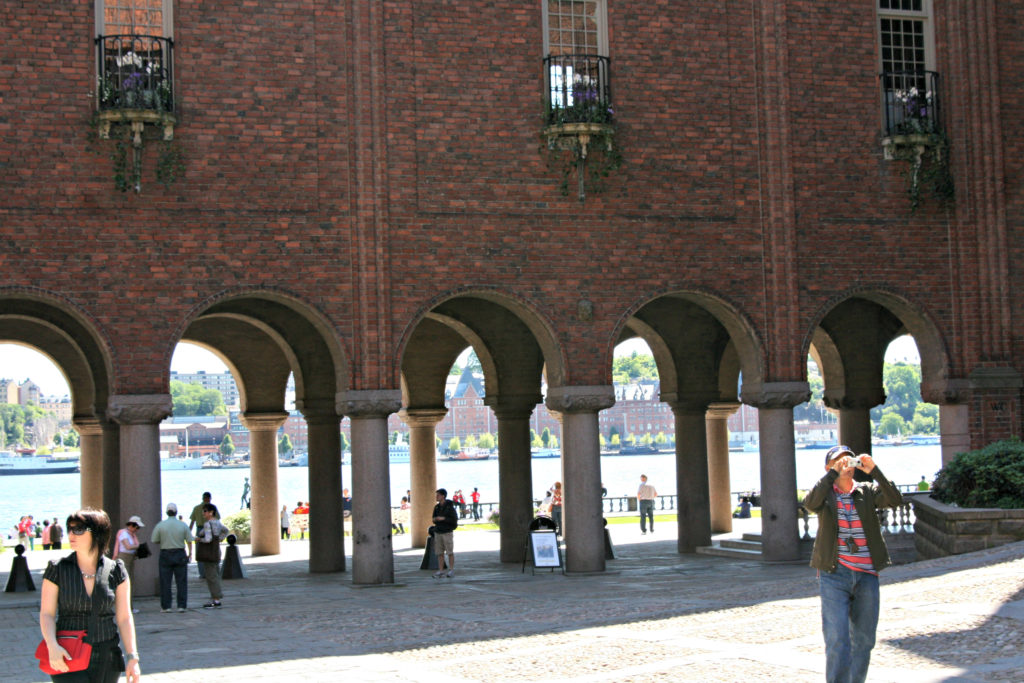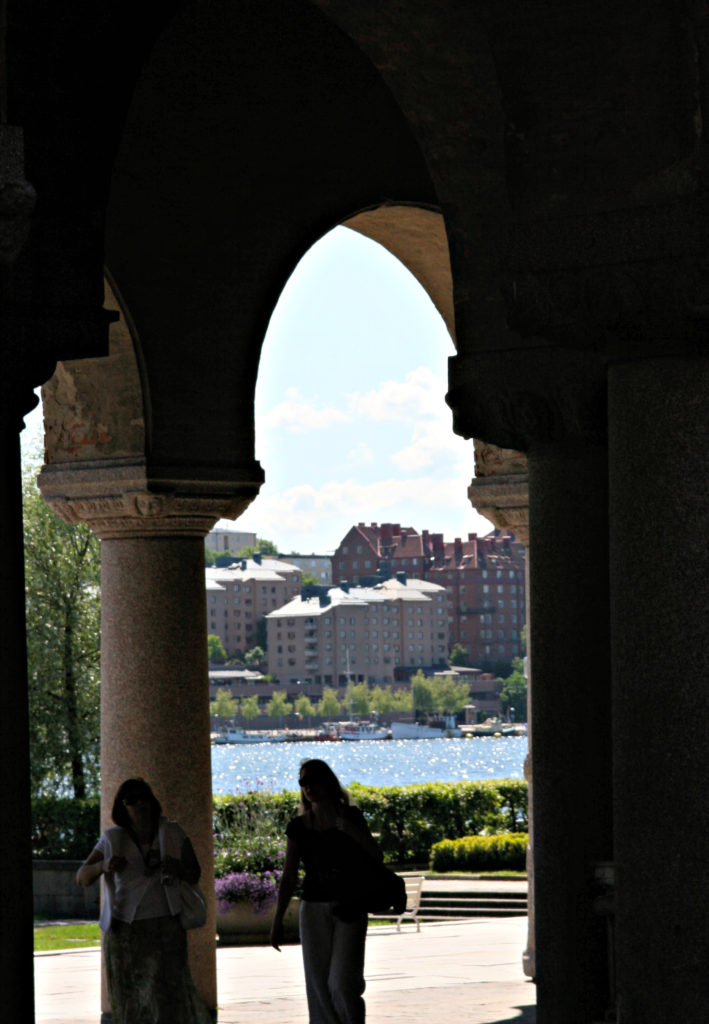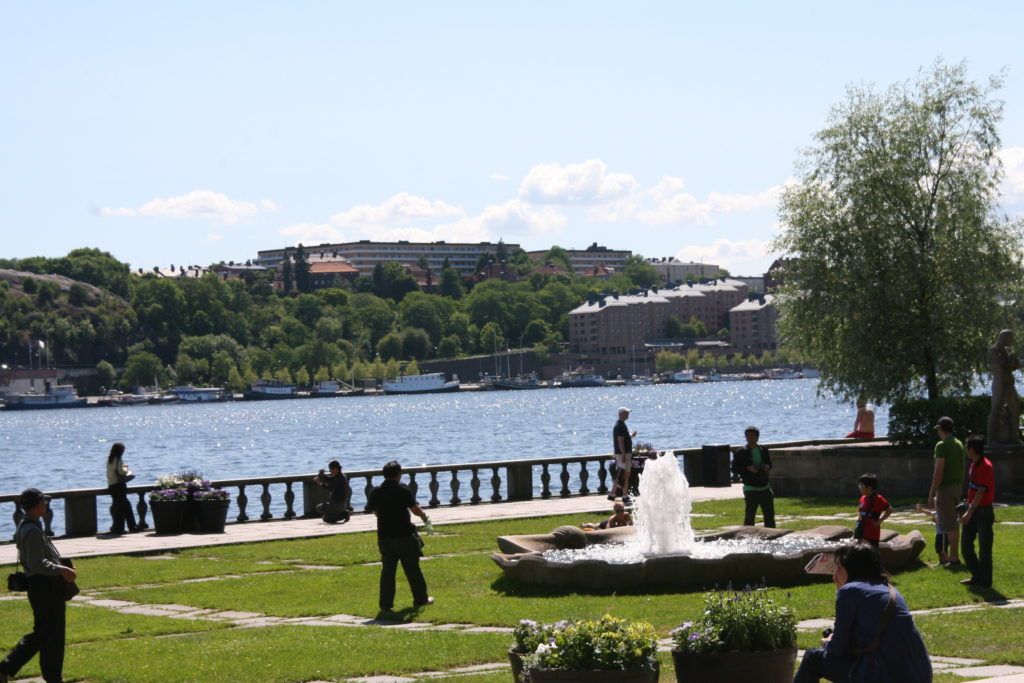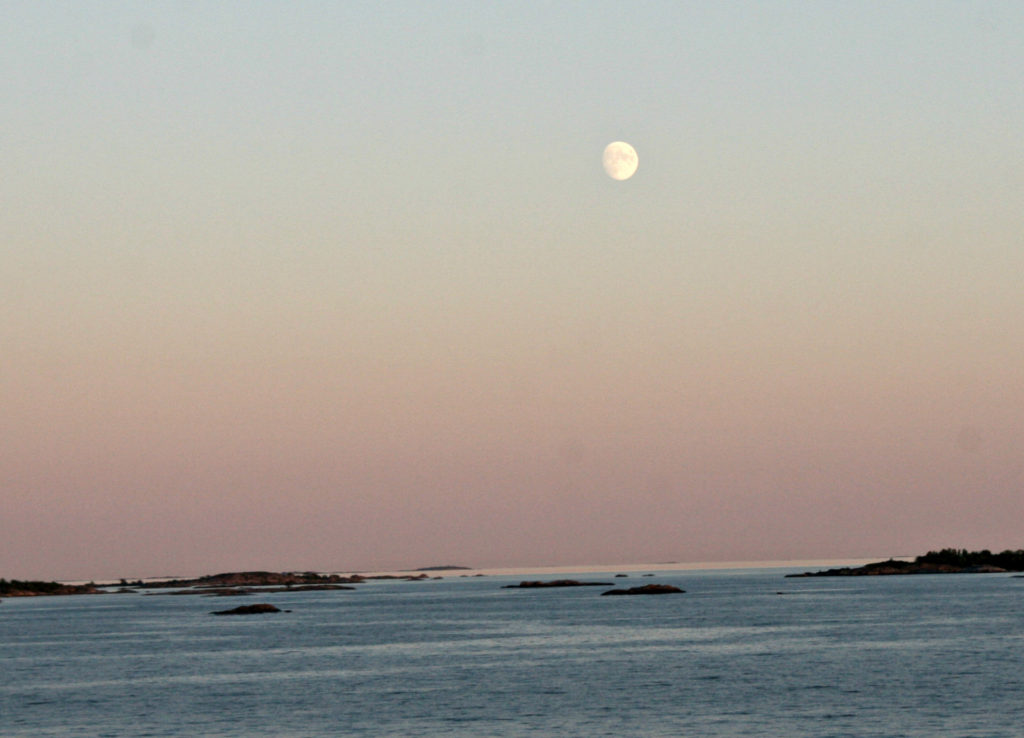
Stockholm, Sweden
Our first port of call after boarding the Star Princess was Stockholm, Sweden. Its history extends back seven centuries when it was inhabited by the Vikings. Sweden has not been at war since 1814. It remained neutral during both world wars, although helped many refuges during World War II including Jewish people fleeing Hitler’s regime. Sweden was also neutral throughout the cold war and did not join NATO. Sweden is a member of the United Nations.
Stockholm is the capital of Sweden and is the country’s cultural, economic and educational center. Most people work in the service industry – there is very little heavy industry making it a very clean city. Stockholm consists of 14 islands so is sometimes referred to as “Venice of the North.” There are over 100 museums in Stockholm, the most famous being the Vasa Museum, a maritime museum which features a 17th Century salvaged warship. Stockholm also hosts the Nobel Prize Award Ceremonies on an annual basis. The pictures that follow are ones I took from our cruise ship as we approached Stockholm. The last picture in this section is of the Kastellet, a small citadel in Stockholm with an interesting history and tradition:
This small naval fort is located on top of a hill on the small island of Kastellholmen just outside of the old Stockholm city center. Its most distinguishing feature is a forked Swedish flag, flying majestically above the citadel. This flag signifies whether or not the country is at peace. When it’s up all is well in Sweden. But when it’s down or replaced by another country’s flag, then that means trouble.
This practice dates back to 1667, when the citadel was first built. It served as a lookout post for incoming ships and a warning to any visitors with ill intent. In 1990, the navy left the fort and attempted to put an end to the tradition, but due to heavy protests from residents of Stockholm, the tradition was picked up again only three days later. Since then a marine is sent to the citadel twice a day, to hoist the flag in the morning and take it down at the end of the day.
www.atlasobscura.com/places/kastellet-stockholm-kastellholmen
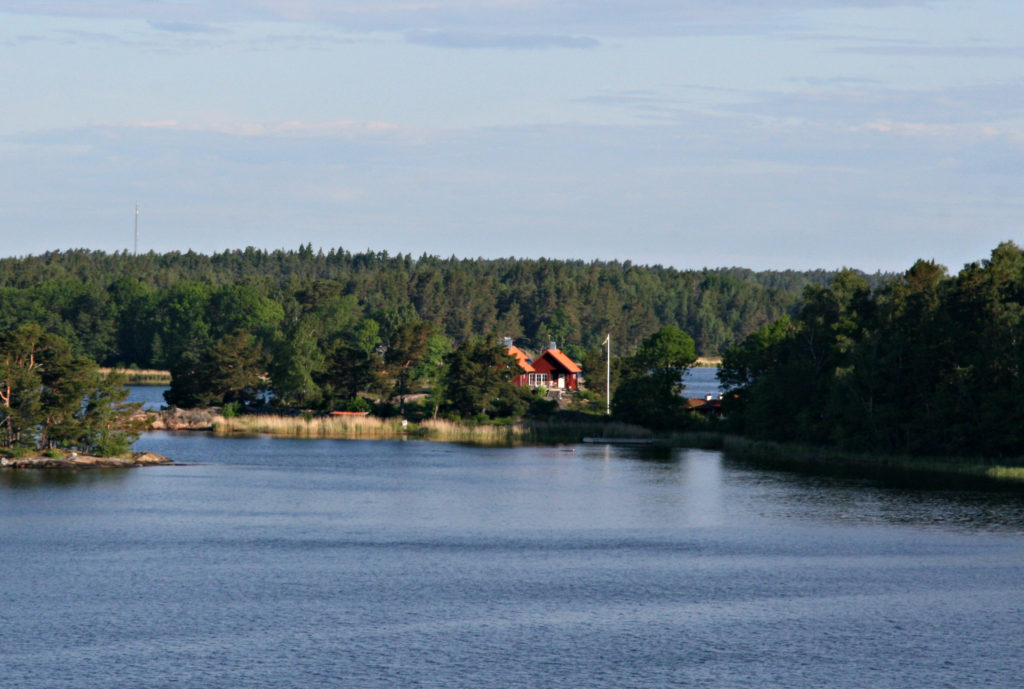
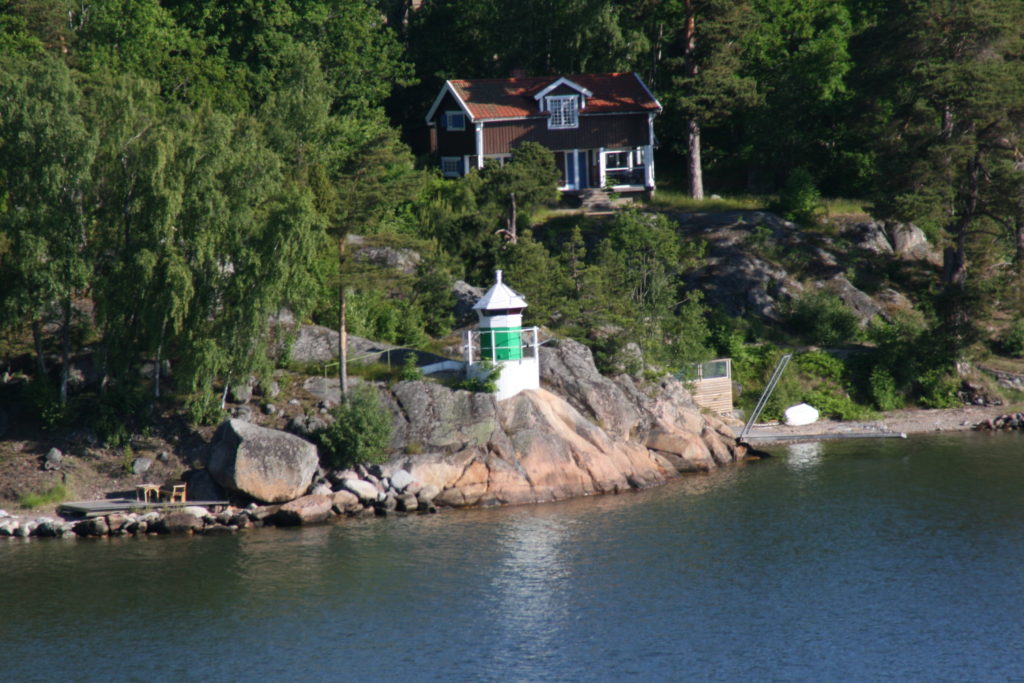
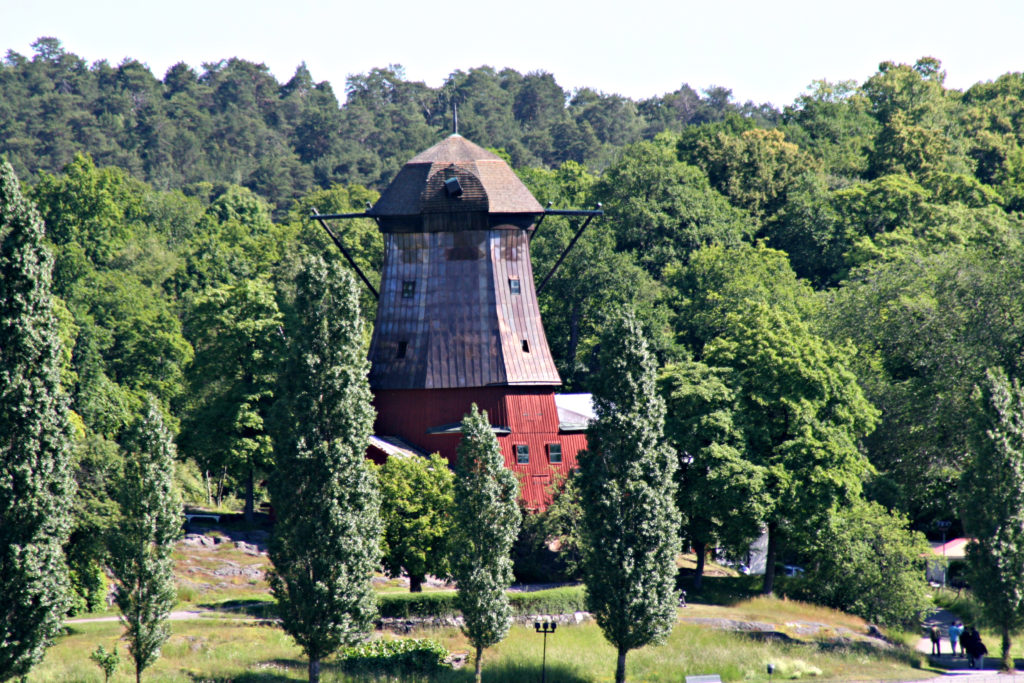

We booked a shore excursion that would take us to two places in Stockholm, the first being the Vasa Museum, home to a recovered warship. The Vasa was constructed from 1626 to 1628 but sank on its first voyage, traveling only about a mile. It is was designed by an experienced shipwright, but was a larger ship and carried more weapons than the ships he had built before. It is thought that the ship was top-heavy due to its many cannons and guns; this extra weight contributed to the ship’s demise. Today there are mathematics that could calculate the sea-worthiness of the ship, but the math did not exist in the 1600’s. It was common for ships to initially be unstable and then adjustments would be made – but the Vasa sunk before problems could be identified and adjustments made.
In addition, many Stockholm residents were present to see the ship’s launching and the captain opened the gun ports on the lower decks, probably to impress the crowd. Wind gusts blew the top-heavy ship on its side and then water entered the open gun ports, making it harder to right the ship. The ship was recovered from the sea bottom in 1961 – a long process that involved maneuvering a “sling” under the ship which attached to pontoons. The ship was raised a little at a time. It was in remarkably good condition because there were no shipworms in the waters and also because the water was very polluted. The polluted waters would not allow microorganisms to survive – these might otherwise have eaten away at the wood. About 98% of the woodwork survived despite the ship being under water for 300 years. Today the ship is a reminder of the time when Sweden was a world power. It is the only complete 17th Century ship on display in the world. The first picture below shows a model of the Vasa. It is to scale (1:10). The colors represent what is believed to be the original colors of the ship, learned after studying minute paint chips. This is followed by two pictures of the ship and then one of the side of the ship showing the open gun ports (see arrow), another factor resulting in the sinking of the Vasa.
The last picture is a reproduction of a bronze canon. While most serving in the navy believed it was better to board and capture an opponent’s warship and add the captured ship to the nation’s fleet, Sweden’s king believed in destroying them. For this reason the ship had many more canons than was typical on a warship of the time – there were 64 canons aboard the Vasa when it sank with eight more still to be delivered.
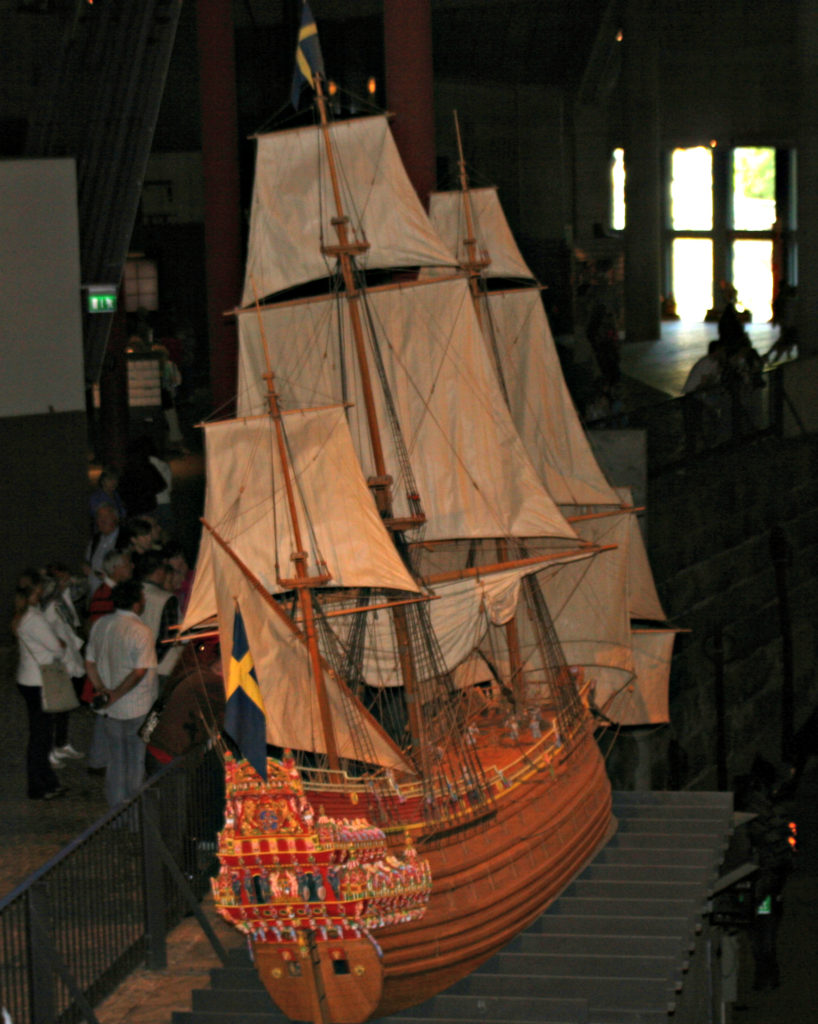

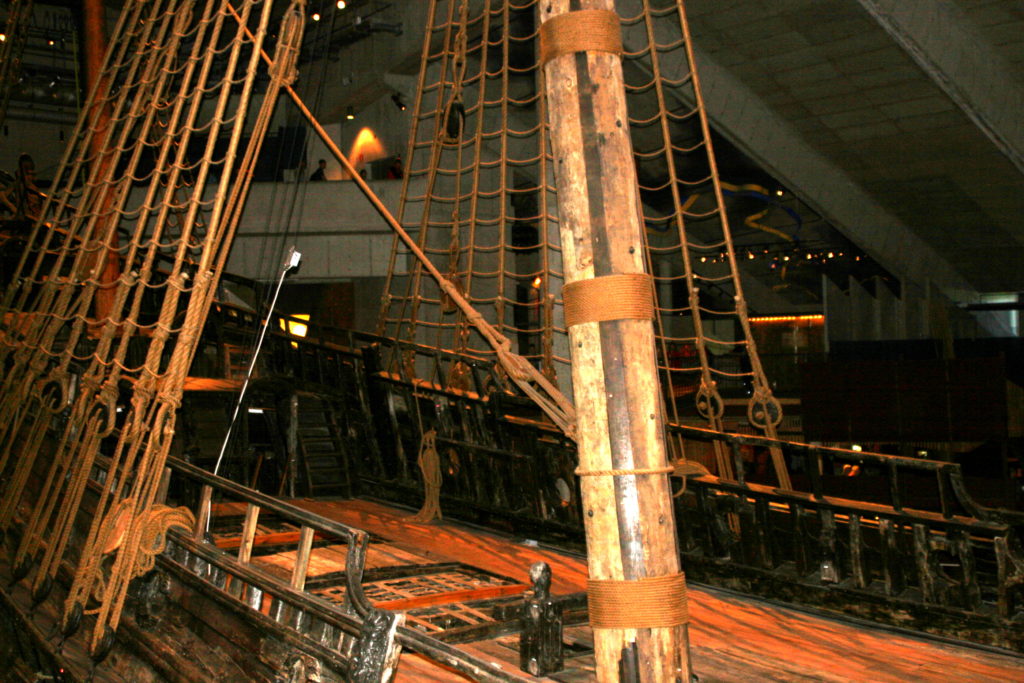
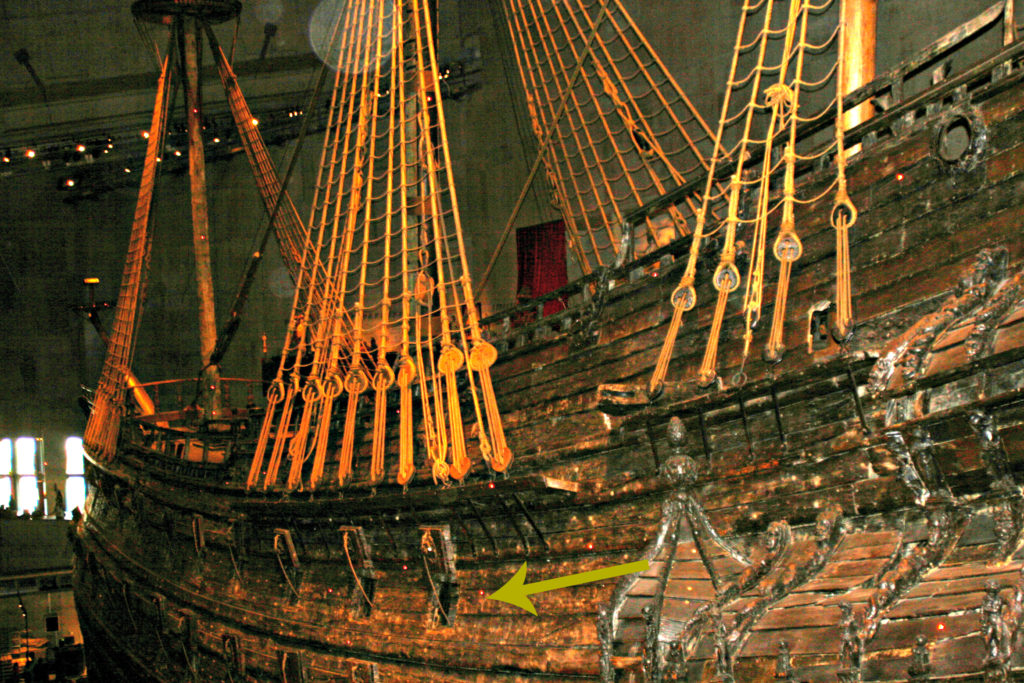
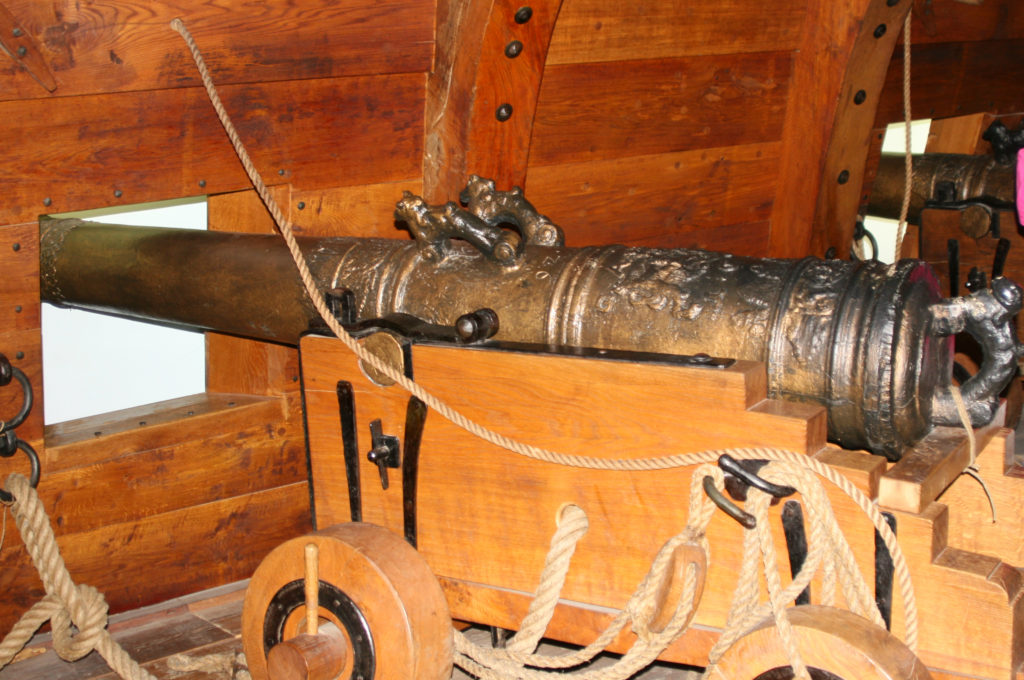
In addition to being designed as a warship, the Vasa was also intended to present an image to the world. King Gustav II Adolf wanted to portray Sweden as a mighty nation. The first picture below shows reproductions of 15 pieces of sculpture salvaged from the ship. The reproductions have been painted as they were likely originally painted.
The next picture is of the coat of arms found on the stern. Lions are holding the Swedish coat of arms. Above the coat of arms, King Gustav II is being crowned by two griffins, creatures with the feet of a lion and the head of an eagle – a symbol of power.
The last picture in this section is Vasa’s figurehead, a lion almost ten feet long. It holds the Swedish coat of arms in its front paws. The lion is a symbol of Swedish royal power.
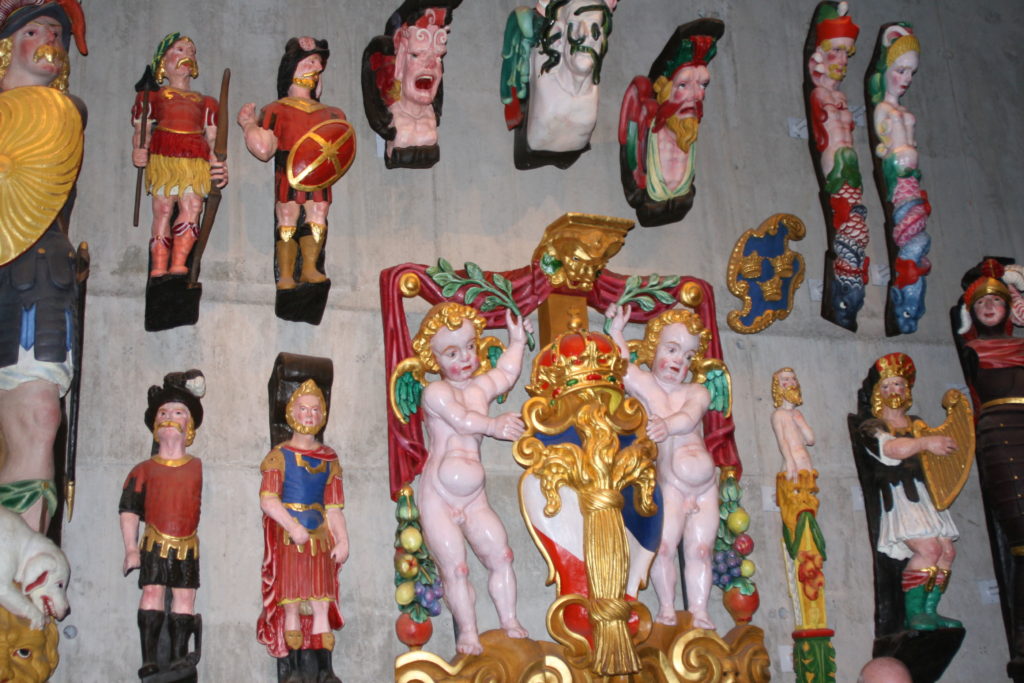
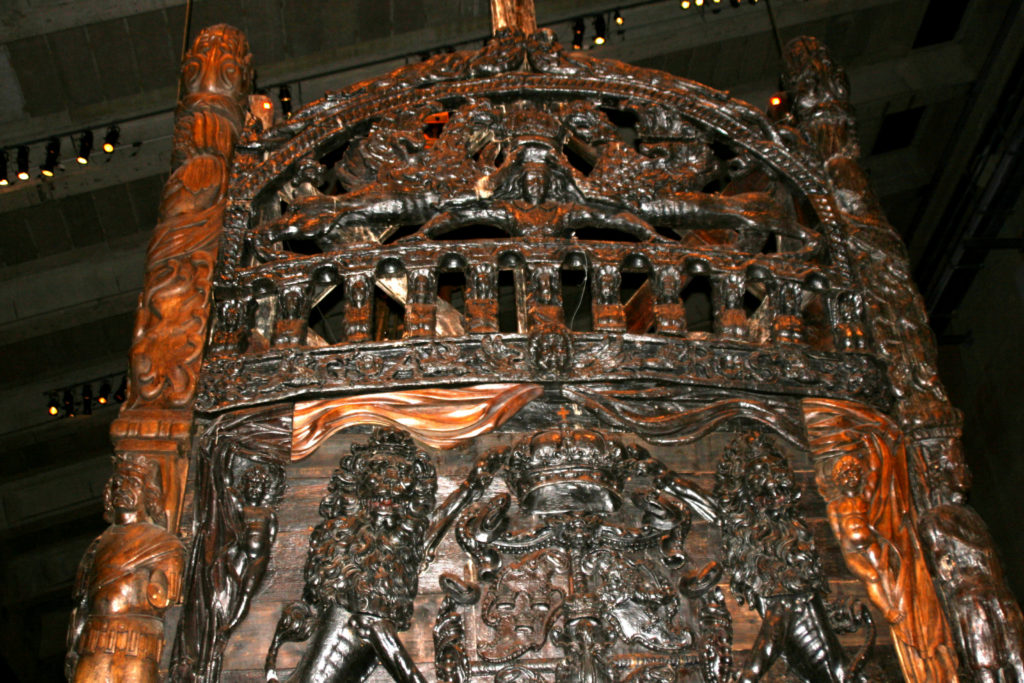
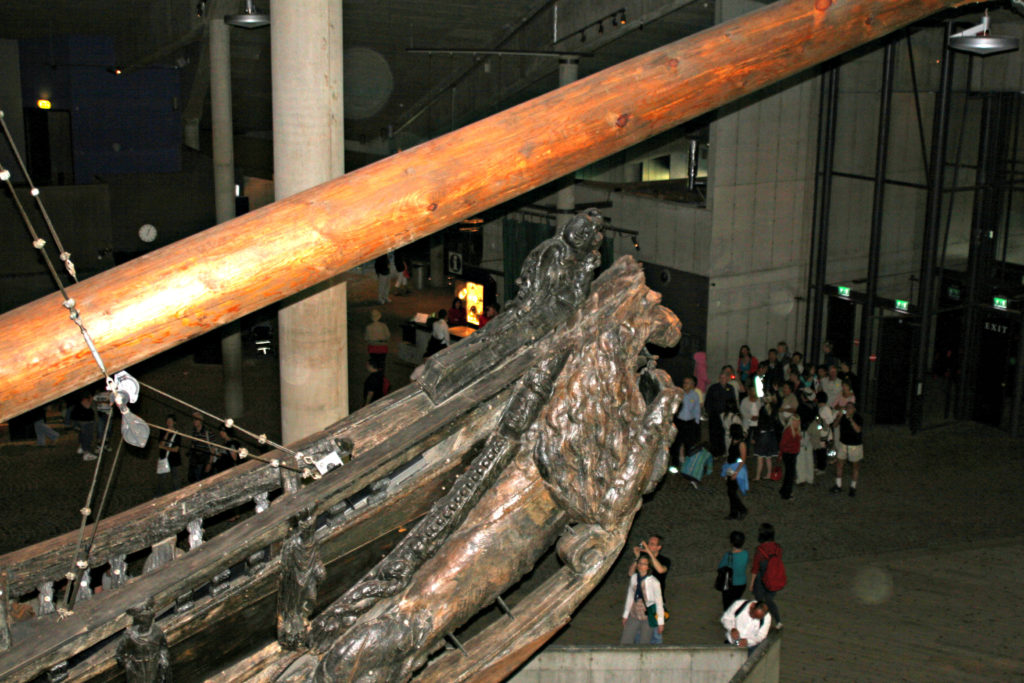
After our time at the Vasa Museum, our shore excursion continued with a trip to Stockholm’s City Hall, home to Stockholm’s local government though probably best know as the site of the Nobel Prize Banquet and Ball. Nobel Prizes in Chemistry, Literature, Physics, and Physiology or Medicine are awarded in Stockholm while the Nobel Prize for Peace is awarded in Oslo, Norway. In Stockholm, the prizes are awarded annually at the Concert Hall on December 10th, the anniversary of Alfred Nobel’s death. The prizes were established in Alfred Nobel’s will. He supposedly read a premature obituary of himself which criticized him for profiting from the design and manufacture of armaments, most famously dynamite, even though his intent was for his discoveries to do good. He acquired a great fortune in his lifetime and established an endowment – interest earned from the endowment fund prizes for Nobel prize winners. Prizes are awarded to those who “confer the greatest benefit for mankind” in the areas mentioned earlier.
Construction of the City Hall began in 1911 and was completed in 1923. It sits near the shore of Lake Malaren on the site of an old grist mill that burned in 1878. Approximately eight million red bricks, call monk bricks, were used in the construction of the City Hall. The tower has three crowns at its top, the historical symbol of Sweden.
The pictures below are of the City Hall, the Three Crowns atop a lantern on Stockholm’s City Hall and the Alfred Nobel Memorial Plaque outside City Hall. The plaque lists Alfred Nobel’s birth and death dates and is roughly translated, “The foot of science in Stockholm and the forefront of peacekeeping.”
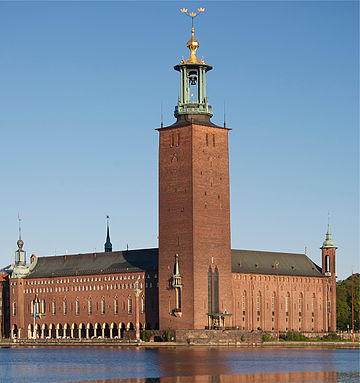
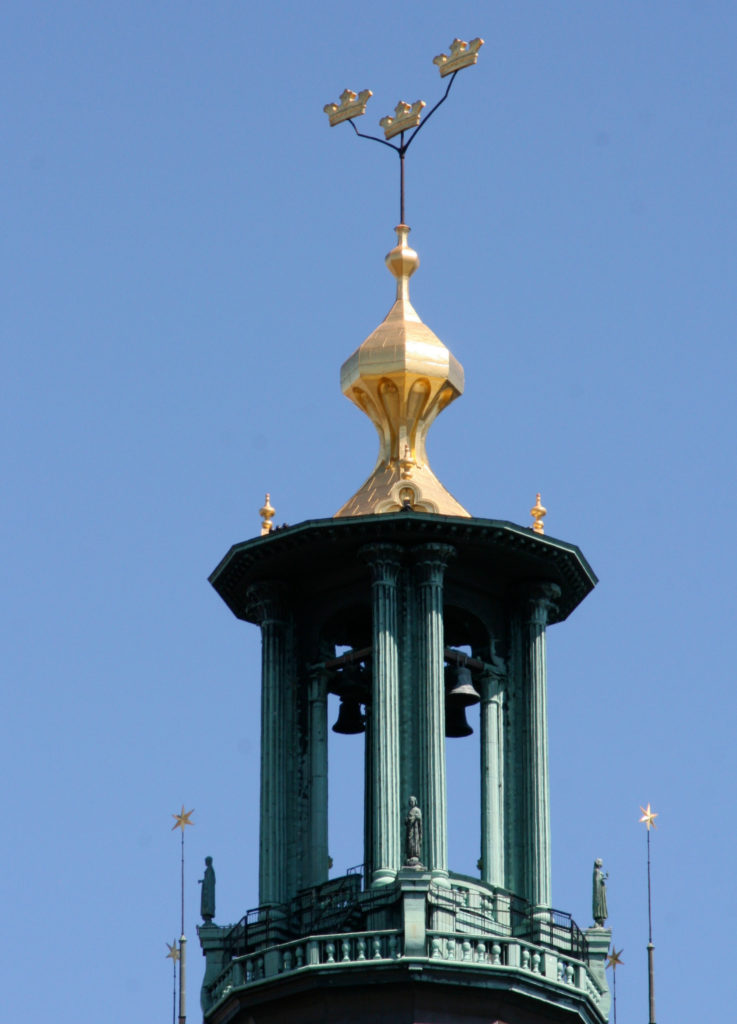
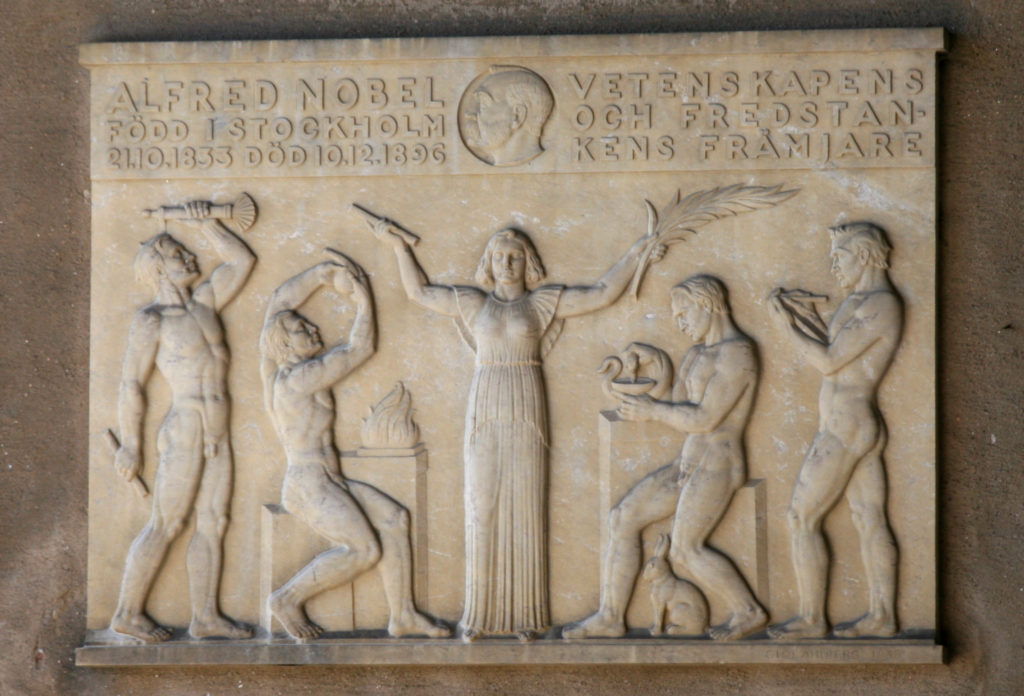
After the Nobel Prize Award Ceremony, the celebration moves to the City Hall for a banquet in the Blue Hall. The Blue Hall, designed by Ragnar Östberg, has walls of red bricks. Originally these were to be plastered and painted blue, to resemble the bay outside of the City Hall. The architect changed his mind when he saw the beauty of the red brick. Since the space was already being called the Blue Hall in anticipation of the plaster and paint, the name was not changed. The space is approximately 160 feet long, almost 100 feet wide and 72 feet tall. It has a beautiful (and massive) staircase to a balcony that leads to the Golden Hall. There is a pipe organ in the Blue Hall, one of the largest in Scandinavia with approximately 10,000 pipes and 135 stops.
The pictures that follow are of the Blue Hall, the marble staircase, the balcony and doorway leading to the Golden Hall, and the place setting used for the Nobel Banquet. About 1,600 people are invited to the banquet including Sweden’s royal family and other government officials.
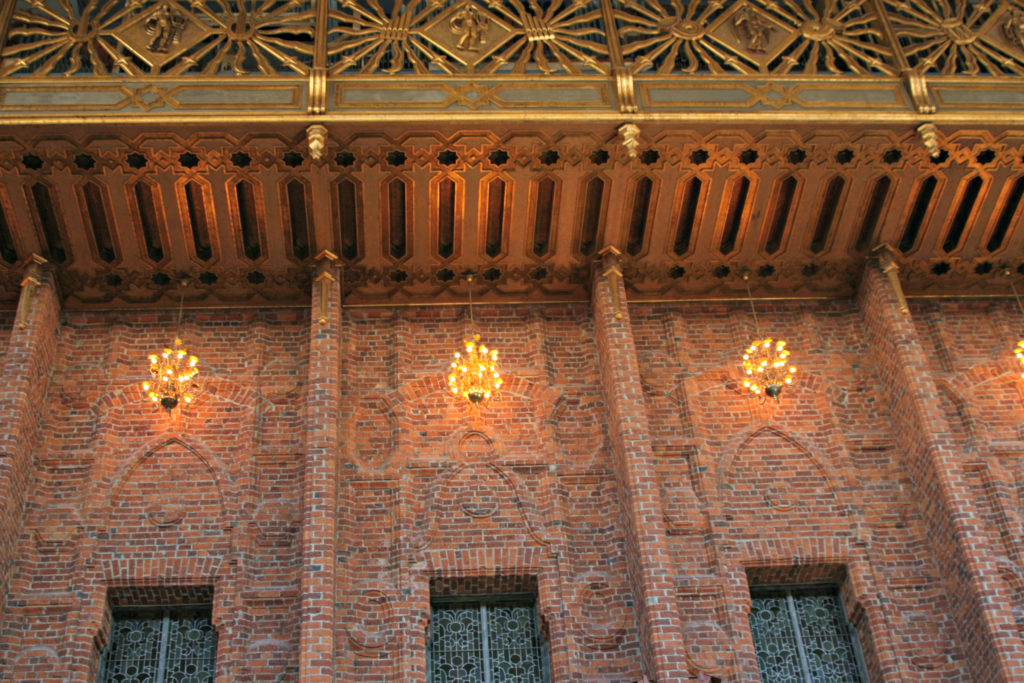
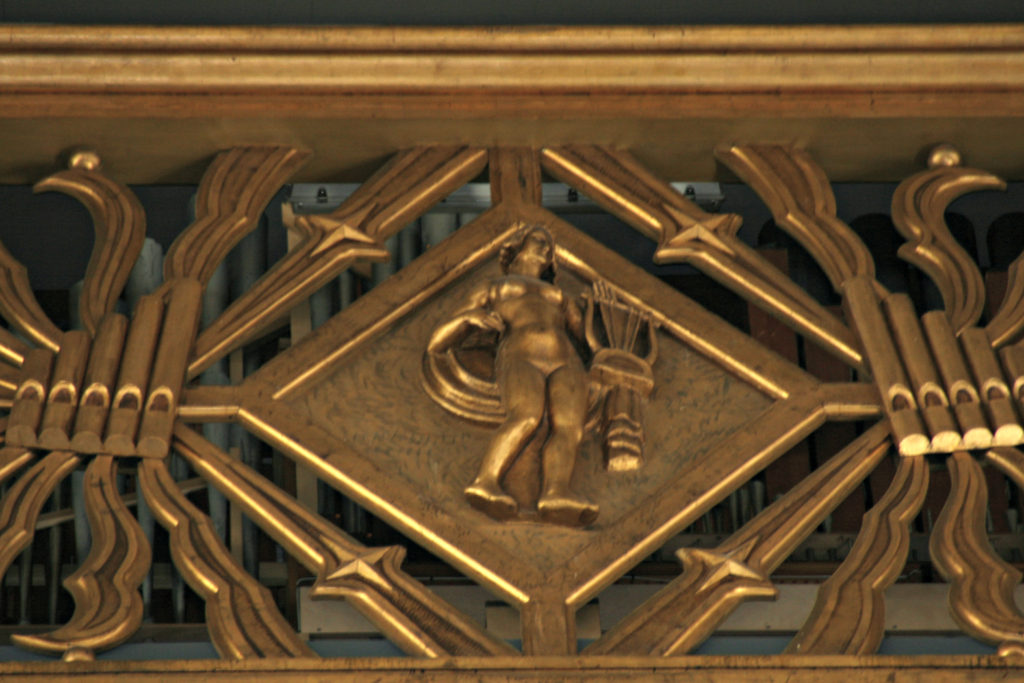
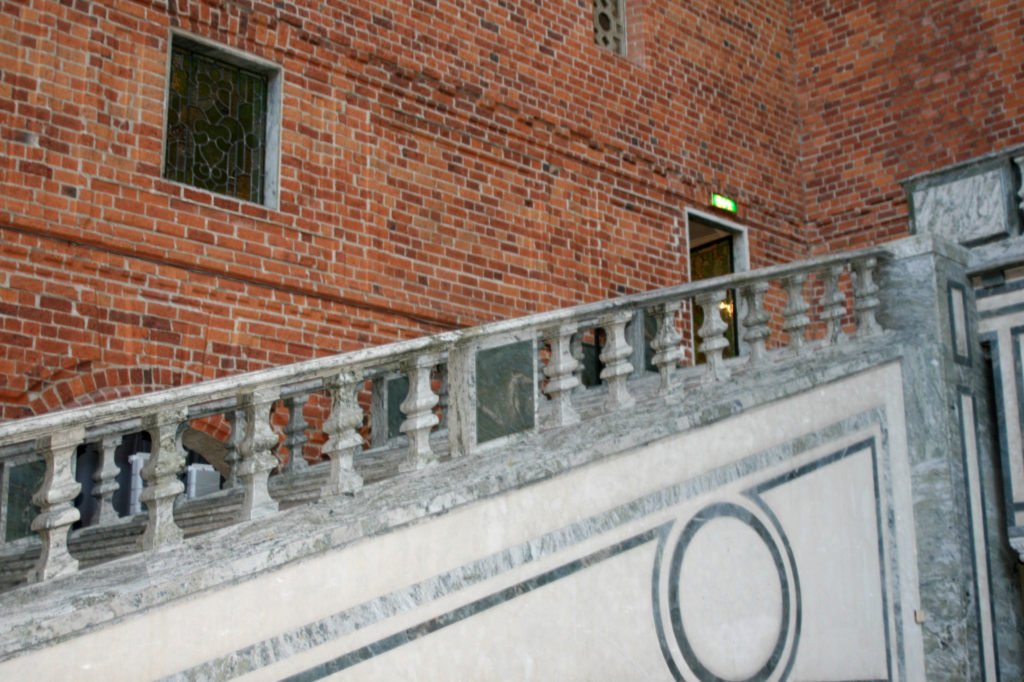
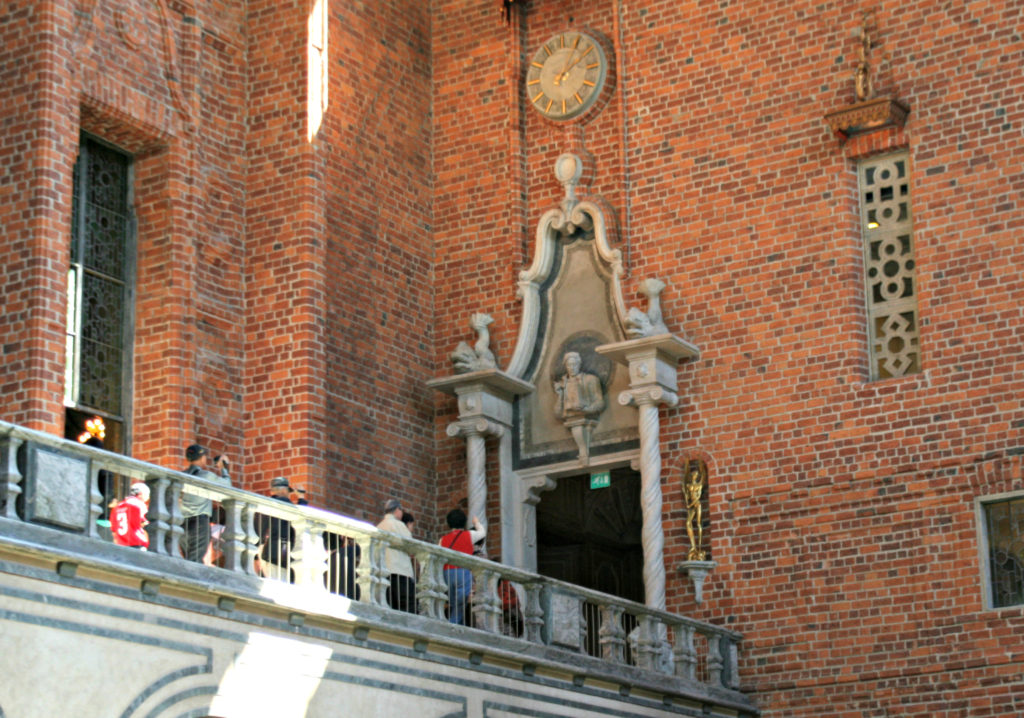
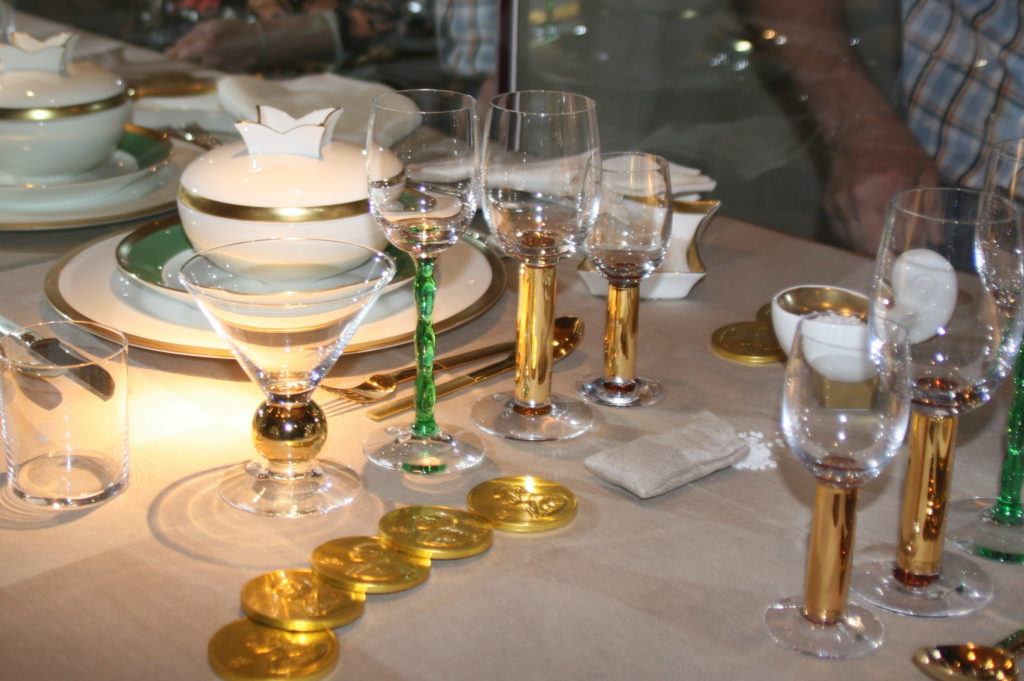
Following the banquet, guests can go up the beautiful staircase and walk along the balcony and through the doorway which will take them to the Golden Hall. It is here the Nobel Ball is held. The Golden Hall is decorated with 18 million mosaic pieces of glass and gold portraying Sweden’s history from the 9th Century to the 1920s. The first picture below is over the door we walked through to enter the Golden Hall. The second picture is at the opposite end of the hall and is entitled the “Queen of Lake Malaren.” This figure represents Stockholm in human form. She is sitting on a throne and there are buildings from around the world to her right and left. The remaining pictures are one of the walls that form the side of the hall and some close-up pictures of the beautiful mosaics.
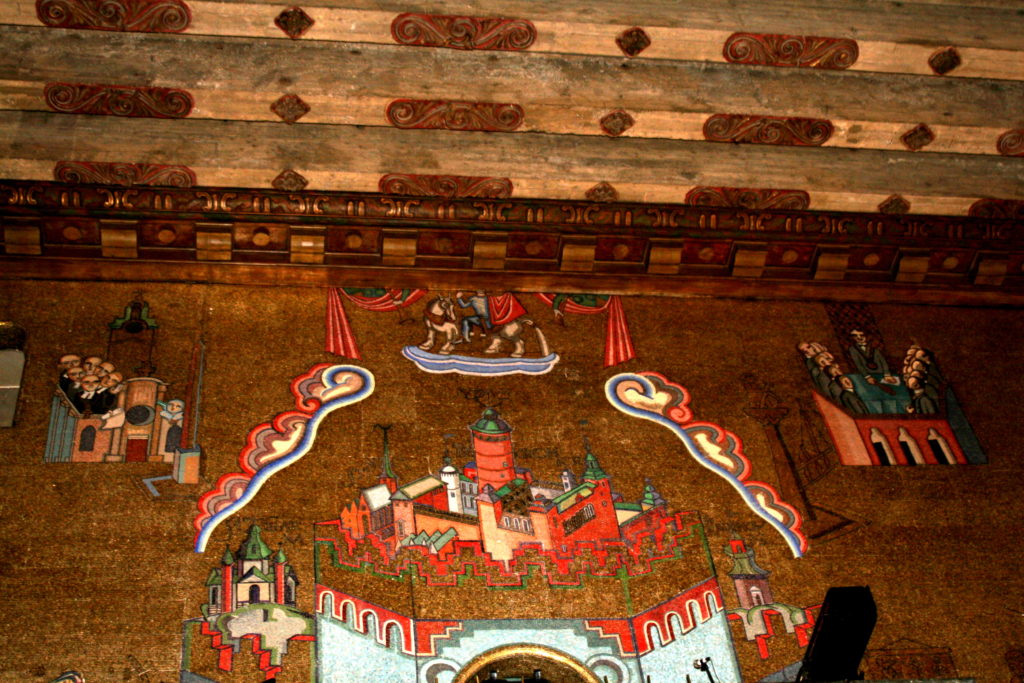

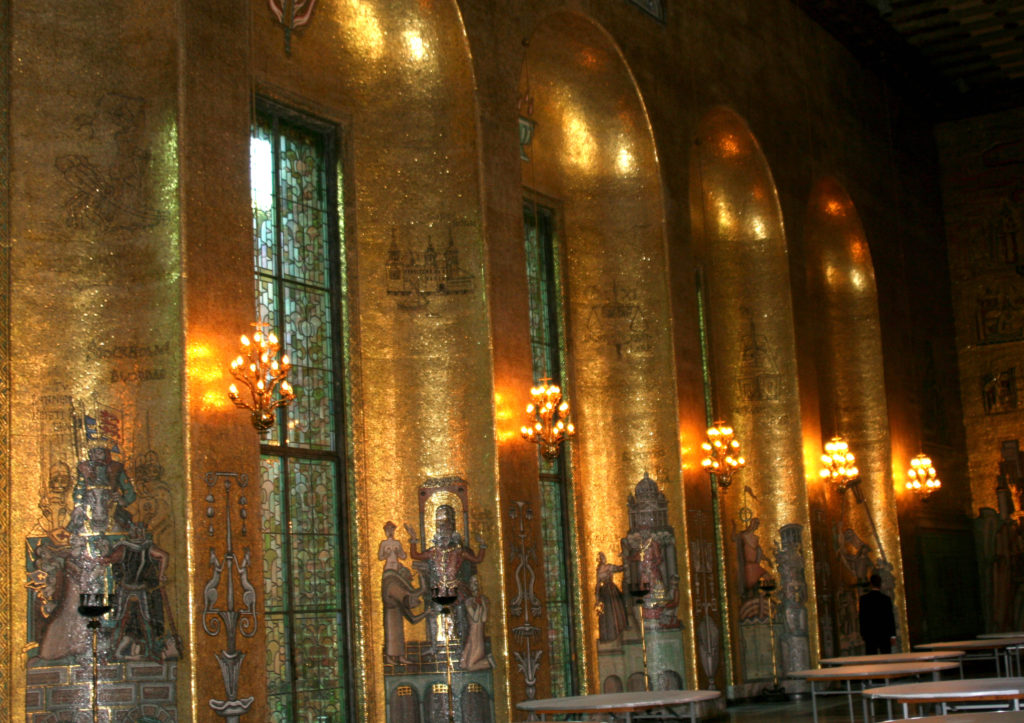
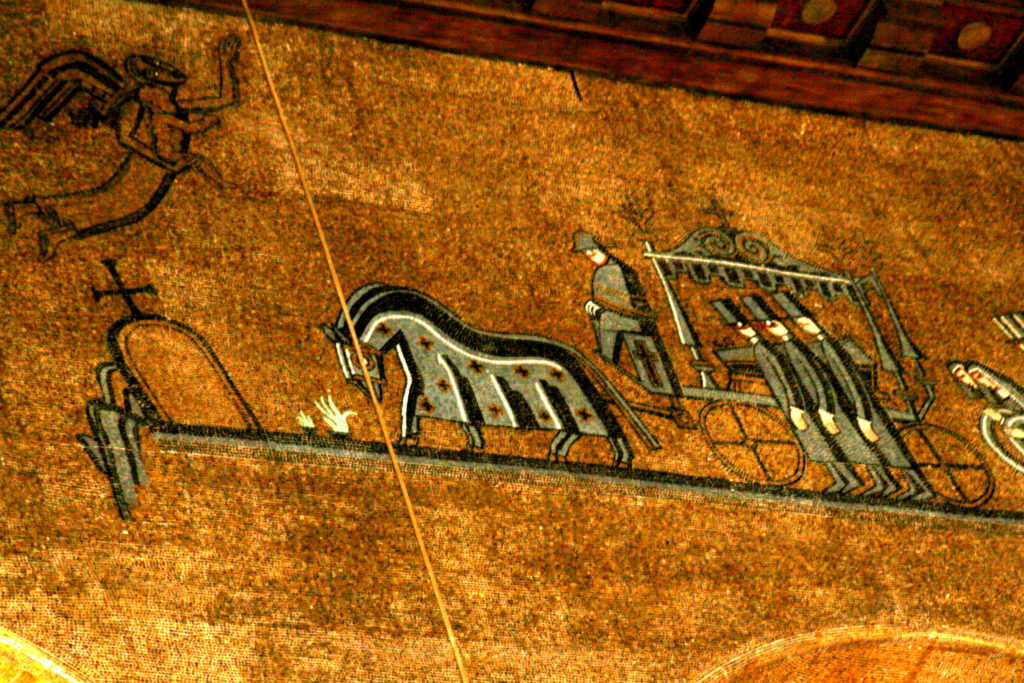
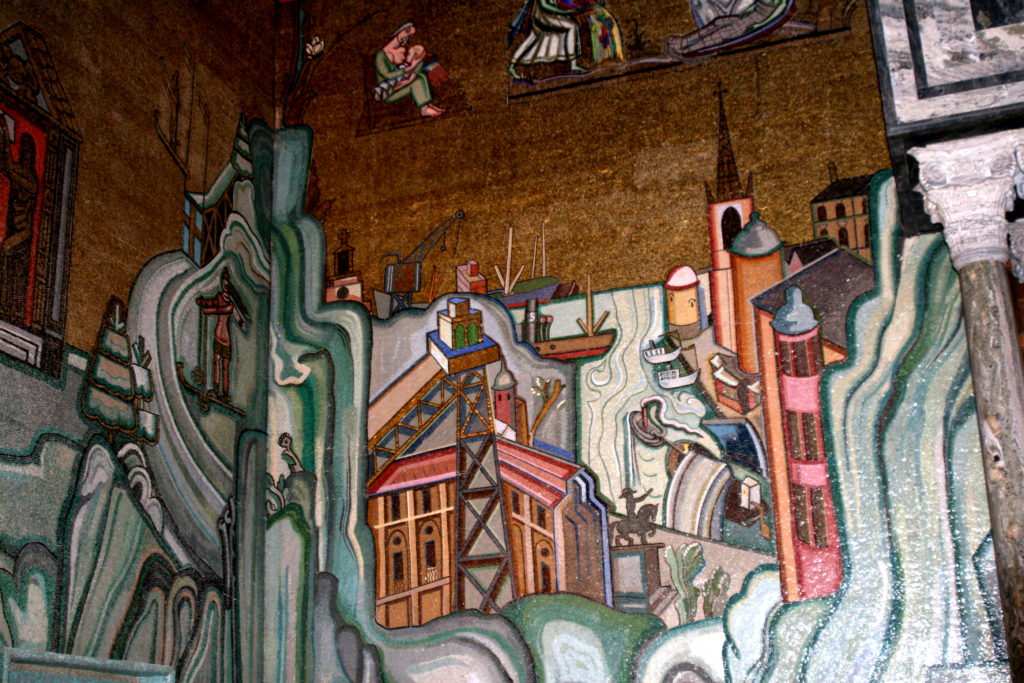
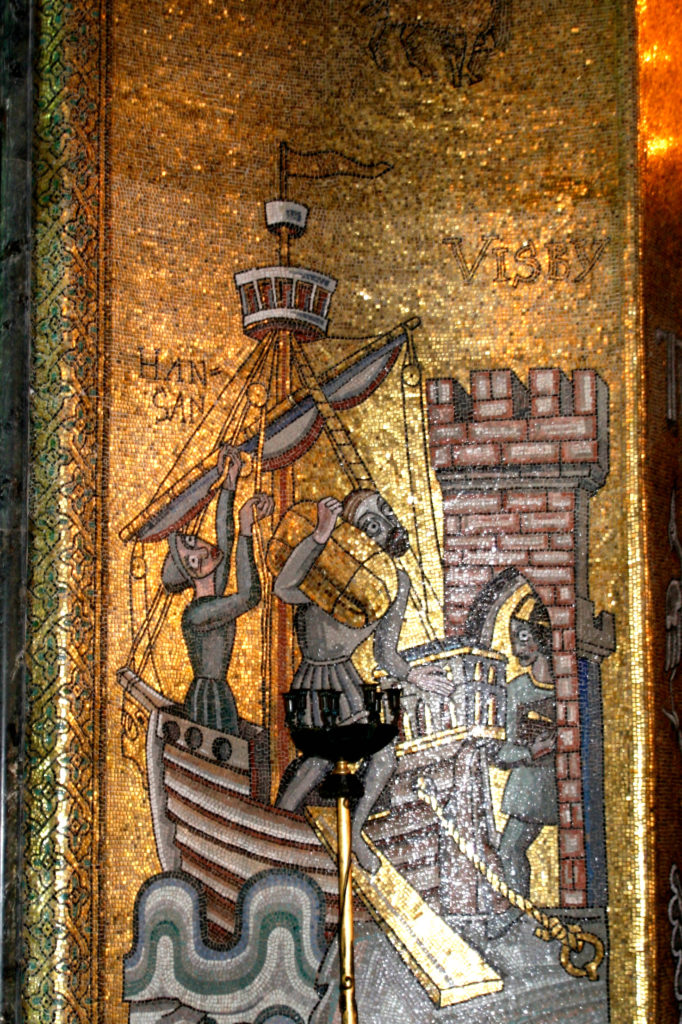
The last pictures I have included in my Stockholm blog post are of the exterior of the City Hall and pictures along the bay. Later that day, we would leave Stockholm and head for Helsinki. The final picture is of the sunset from our cruise ship.
